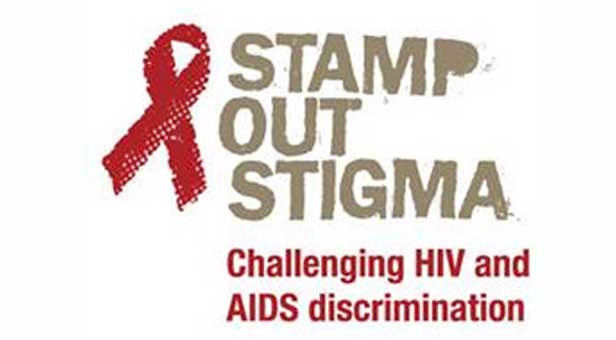 HIV/AIDS: What educators should know
HIV/AIDS: What educators should know
By Tiffany A. Chenneville & Howard M. Knoff, Ph.D.University of South Florida
Introduction
Acquired Immune Deficiency Syndrome (AIDS) is not only a health crisis, but a social crisis that has affected every sector of the United States. The number of persons with AIDS in the United States is staggering, and it continues to multiply. Furthermore, the growing number of individuals infected with the Human Immunodeficiency Virus (HIV), the virus that causes AIDS, is even more disturbing. Nobody is immune because AIDS does not discriminate by sexual orientation, gender, race, socioeconomic status or age.
The failure of AIDS to discriminate by age is evident by the growing number of children and adolescents infected by HIV/AIDS. There also are scores of children who are not infected, yet are affected by HIV/AIDS because one or both of their parents, or other family members, have been diagnosed as being HIV positive or having AIDS. In fact, an increasingly large number of children have been orphaned by parents who have died from AIDS. It is estimated that over 80,000 children will have been orphaned by the year 2000 due to parental deaths caused by AIDS. Non-infected children and adolescents also may be affected through their association with peers or significant others who are HIV positive, have AIDS, or who have lost loved ones due to AIDS.
HIV/AIDS in Children and Young Adults: As of June, 1996, over a half a million (548,102) diagnosed AIDS cases had been reported to the Centers for Disease Control. Approximately 1.3 percent (or 7,296) were children less than 13-years-old. This is a significant increase from the 3,898 pediatric AIDS cases reported just three years before in 1992. Relative to adolescents, the incidence of AIDS also is considered to be large and increasing. In fact, AIDS is considered to be one of the leading causes of death among teenagers, and it is estimated that two individuals under the age of 25 are infected with HIV every hour.
AIDS is also the leading cause of death for people between the ages of 25 to 44 in the United States. This is significant because it is believed that many of the young adults currently infected with HIV/AIDS may have contracted the HIV virus during adolescence. Thus, adolescent incidence figures may underestimate those who contract HIV but do not exhibit its symptoms until early adolescence.
Relative to gender, HIV is being contracted more rapidly by women, including young girls and adolescents, than by men. Critically, the large and increasing number of females with AIDS also increases the probability of children being born with HIV due to prenatal or perinatal transmission. It is estimated that 25 percent of infants born to HIV-infected mothers will themselves become infected. These children represent one of the fastest growing groups testing positive for the HIV virus.
Definitions:
HIV – Human Immunodeficiency Virus, the virus that causes AIDS.
AIDS – Acquired Immunodeficiency Syndrome, the condition that results from HIV infection. AIDS is distinguished from HIV by the presence of an opportunistic infection or a T-cell count of 200 or less.
What We Know About HIV/AIDS
Transmission:
HIV is transmitted through blood, semen, vaginal fluid, and in some cases, breast milk. This allows for many possible modes of transmission including the following:
Sexual contact (vaginal, anal, oral) with an HIV-infected person
Sharing needles or syringes with someone who is HIV positive
Mother to child transmission during pregnancy, during delivery, or in some cases, through breast feeding
Blood transfusion with contaminated blood products, although the risk of HIV transmission through blood trans-fusions is minimal given current blood screening practices employed by blood banks.
It is critical to note that HIV is not transmitted through casual contact.
Prevention:
Abstinence from sexual activity Condom use during sexual activity (vaginal, anal, and oral) Not sharing needles or syringes. It is critical to note that condoms are not 100 percent effective but greatly reduce the risk of HIV trans-mission.
Facts about AIDS:
You cannot tell if someone has AIDS by looking at them.
Currently, there is no cure for AIDS.
Currently, there is no immunization to guard against the transmission of HIV.
AIDS affects people of all ages, races, and socioeconomic status, and individuals with different sexual orientations including heterosexuals, bisexuals, and homosexuals.
No cases of AIDS have been reported due to kissing, biting, or mosquito bites.
HIV is not transmitted through touching or hugging.
HIV cannot be contracted from donating blood.
There are no reported cases of HIV being transmitted from child to child or child to staff member in a school building due to fights or contact sports.
Impact of HIV/AIDS on Children and Adolescents
Many issues relative to academic and social development and functioning arise for children and adolescents with HIV or AIDS. In addition to the physical implications of HIV/AIDS, there are various neurological and psychosocial implications as discussed below.
Physical Implications: HIV infection suppresses the immune system making persons testing positive for HIV vulnerable to opportunistic infections and illnesses which include, but are not limited to, certain forms of cancer, pneumonia, and fungal infections.
Therefore, the physical symptoms experienced by persons with HIV or AIDS will vary according to their physical condition and the impact of these illnesses. HIV-infected individuals who have not been diagnosed with an opportunistic infection may also experience generalized symptoms associated with immune suppression such as fatigue, diarrhea, weight loss, fever, and night sweats. To date, there is no cure for AIDS; however, pharmacological therapy (e.g., anti-retroviral medications, protease inhibitors) is used to prolong the onset of symptoms.
AIDS is also the leading cause of death for people between the ages of 25 to 44 in the United States. This is significant because it is believed that many of the young adults currently infected with HIV/AIDS may have contracted the HIV virus during adolescence. Thus, adolescent incidence figures may underestimate those who contract HIV but do not exhibit its symptoms until early adolescence.
Relative to gender, HIV is being contracted more rapidly by women, including young girls and adolescents, than by men. Critically, the large and increasing number of females with AIDS also increases the probability of children being born with HIV due to prenatal or perinatal transmission. It is estimated that 25 percent of infants born to HIV-infected mothers will themselves become infected. These children represent one of the fastest growing groups testing positive for the HIV virus.
Definitions:
HIV – Human Immunodeficiency Virus, the virus that causes AIDS.
AIDS – Acquired Immunodeficiency Syndrome, the condition that results from HIV infection. AIDS is distinguished from HIV by the presence of an opportunistic infection or a T-cell count of 200 or less.
What We Know About HIV/AIDS
Transmission:
HIV is transmitted through blood, semen, vaginal fluid, and in some cases, breast milk. This allows for many possible modes of transmission including the following:
Sexual contact (vaginal, anal, oral) with an HIV-infected person
Sharing needles or syringes with someone who is HIV positive
Mother to child transmission during pregnancy, during delivery, or in some cases, through breast feeding
Blood transfusion with contaminated blood products, although the risk of HIV transmission through blood transfusions is minimal given current blood screening practices employed by blood banks.
It is critical to note that HIV is not transmitted through casual contact.
Prevention:
Abstinence from sexual activity
Condom use during sexual activity (vaginal, anal, and oral)
Not sharing needles or syringes
It is critical to note that condoms are not 100 percent effective but greatly reduce the risk of HIV transmission.
Facts about AIDS:
You cannot tell if someone has AIDS by looking at them.
Currently, there is no cure for AIDS.
Currently, there is no immunization to guard against the transmission of HIV.
AIDS affects people of all ages, races, and socioeconomic status, and individuals with different sexual orientations including heterosexuals, bisexuals, and homosexuals.
No cases of AIDS have been reported due to kissing, biting, or mosquito bites.
HIV is not transmitted through touching or hugging.
HIV cannot be contracted from donating blood.
There are no reported cases of HIV being transmitted from child to child or child to staff member in a school building due to fights or contact sports.
Impact of HIV/AIDS on Children and Adolescents
Many issues relative to academic and social development and functioning arise for children and adolescents with HIV or AIDS. In addition to the physical implications of HIV/AIDS, there are various neurological and psychosocial implications as discussed below.
Physical Implications: HIV infection suppresses the immune system making persons testing positive for HIV vulnerable to opportunistic infections and illnesses which include, but are not limited to, certain forms of cancer, pneumonia, and fungal infections. Therefore, the physical symptoms experienced by persons with HIV or AIDS will vary according to their physical condition and the impact of these illnesses. HIV-infected individuals who have not been diagnosed with an opportunistic infection may also experience generalized symptoms associated with immune suppression such as fatigue, diarrhea, weight loss, fever, and night sweats. To date, there is no cure for AIDS; however, pharmacological therapy (e.g., anti-retroviral medications, protease inhibitors) is used to prolong the onset of symptoms.
Neurological Implications: An estimated 75% to 90% of children infected with HIV experience neuropsychological deficits resulting from developmental delays and/or cognitive disabilities. It is known that HIV infection can interfere with the normal brain development of children, resulting in neurological damage. This is especially true for children infected through perinatal transmission, whose central nervous systems are not yet fully developed at the time of infection. Among other cognitive dysfunctions, visual and auditory short-term memory loss, attention deficits, language disorders, spatial ability problems and expressive and receptive language difficulties may be observed in pediatric AIDS cases. Furthermore, moderate to severe mental retardation is associated with certain neurological disorders caused by HIV.
While HIV-related neurological impairment in children is commonly associated with cognitive delays, neurological impairment in adolescents is more commonly associated with cognitive deterioration. Neurological damage commonly results in the death of children with AIDS Anti-retroviral medications, as well as medications which help to prevent serious opportunistic infections, are thought to be partially responsible for extending the life of HIV-infected individuals. However, the quality of life for such individuals can be negatively affected by subtle, progressive and insidious problems directly resulting from HIV infection, including neurological impairment. HIV infection and AIDS not only impact the immune system, but also the central nervous system. In fact, it is hypothesized that HIV may directly infect the brain. As such, neurological impairment may result from either a direct attack on the central nervous system or through opportunistic infections that the body cannot stop due to HIV or AIDS.
While HIV-related neurological impairment in children is commonly associated with cognitive delays, neurological impairment in adolescents is more commonly associated with cognitive deterioration. Neurological damage commonly results in the death of children with AIDS.
Social Implications: Many of the symptoms reported by children with AIDS are similar to those experienced by children living with other chronic illnesses. Such symptoms include loss of abilities, physical impairments and the fear of impending death. Each of these may result in psychological reactions, including anxiety and depression. However, the social experiences of HIV-infected children differ from those of children with other chronic illnesses in several ways. First, many HIV-infected children, especially those who contract the virus perinatally, may have to cope with losses associated with AIDS-related illnesses and deaths within their families. Second, HIV-infected children are likely to experience additional risk factors: chronic poverty, housing problems, nutritional problems, poor access to medical and social support services, and exposure to violent or dangerous neighborhood environments. Third, and most important, is the stigma associated with HIV/AIDS. AIDS-related stigma is the result of both fear and discrimination. Attempts have been made to deny rights to individuals infected with HIV/AIDS, including the right to employment and the right to a free and appropriate education. Although federal and legal mandates attempt to protect the constitutional rights of people with AIDS, stigmatization and discrimination persist.
What Can I Do as a Teacher?
Teachers have a responsibility to educate themselves about HIV/AIDS. Teachers must be knowledgeable about the modes of transmission and the modes of prevention if they are to educate their students about how to protect themselves. Also, knowledge about transmission and prevention is necessary to calm their own, students’, and parents’ concerns about children with HIV or AIDS who are being educated in a regular classroom setting. Teachers can educate themselves by taking courses offered by the American Red Cross (see the Resource section below for an 800 number) or other local community agencies.
It is a well-documented fact that children model adults’, including teachers’, behavior. Therefore, it is important that teachers model appropriate behavior that emphasizes problem solving and informed decision-making. It also is critical that teachers model behaviors that discourage discrimination and prejudice against persons with HIV/AIDS. This type of modeling by teachers not only impacts students in their own classrooms, but also the school buildings in which they work.
Teachers should be aware of the relationship between alcohol/drug use and HIV/AIDS. Alcohol and drug use are considered risk factors for the transmission of HIV because: (a) it is a known fact that alcohol and drug decrease inhibition, thus increasing the likelihood that individuals will engage in high risk behavior such as unprotected sex; and (b) intravenous drug use is known to be a high risk behavior that may result in HIV transmission. There are also many other negative consequences of alcohol/drug use not associated with HIV/AIDS. Therefore, it is important that teachers educate their students about risks associated with alcohol/drug use and attempt to promote abstinence from such substances.
Teachers should not be fearful if there is a student with HIV/AIDS in their classroom. There are no documented cases of AIDS transmission due to casual contact, biting, fighting, or contact sports.
It is important to respect students’ and parents’ right to privacy. Teachers should be aware of and abide by confidentiality/disclosure laws and policies within their school building and district.
Universal precautions should be maintained when coming into contact with blood or other bodily fluids that may contain blood. Universal precautions refer to the use of gloves and disinfectants when in contact with blood or blood-contaminated products.
In response to the growing number of school-age children and adolescents infected or affected by HIV/AIDS, schools have been forced to address important issues relative to this disease. The presence of students with HIV/AIDS in the schools has created a controversy for some relative to social, legal, and moral issues. In fact, there have been, and continue to be, debates about the appropriateness of HIV-infected students being educated within regular classrooms. The impact of HIV/AIDS on schools is evident also by debates that continue about what information should be included in HIV/AIDS curricula, and whether such curricula should exist at all.
As previously discussed, students with HIV or AIDS present various physical, neurological, and psychosocial problems. In order to intervene, school-based health (including mental health) services must be provided to children, adolescents, and their families. In fact, schools are continually recognizing the impact of health issues on academic functioning, and subsequently, the need for models of health care delivery to be incorporated into educational systems. Schools must work to create academic and social environments that address not only the needs of students with HIV or AIDS, but also the needs of those affected by the AIDS crisis – including peers, teachers, and administrators. Indeed, all members of the school community potentially are affected by this disease, and programs need to be designed to confront this reality. Such programs, ideally, should incorporate the goals of primary, secondary, and tertiary prevention. This type of approach can proactively address the needs of all school members through education and service provision.
Applied here, tertiary prevention focuses on the development of programs and interventions for those already infected and those directly impacted by HIV/AIDS. Secondary prevention targets those groups who are at-risk for contracting HIV, or those groups who will be affected socially, emotionally, financially, or otherwise due to their interactions with an HIV/AIDS infected individual. Finally, primary prevention involves community-wide





Be the first to comment